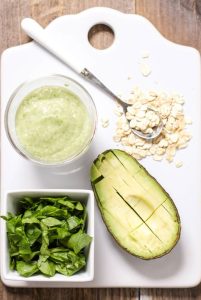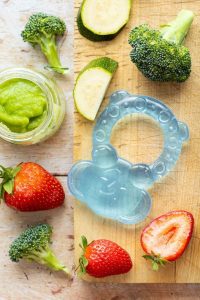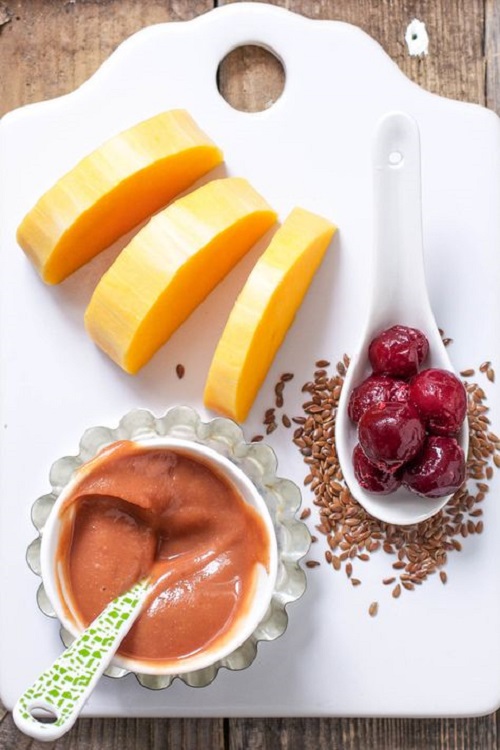How to get baby to eat vegetable puree? Introducing your baby to solid foods is an exciting milestone! It’s a time of exploration, discovery, and learning new tastes. Vegetables are a crucial part of a healthy diet, but some babies might be hesitant to try them at first. Here are some tips and tricks to encourage your baby to enjoy the wonderful world of veggie purees!
Understanding Baby’s Taste Preferences
Babies are naturally drawn to sweet flavors. This is because breast milk and formula are both sweet. So, it’s perfectly normal for your baby to be unsure about the new, sometimes bitter, taste of vegetables.
Patience is key! It may take multiple tries before your baby warms up to veggie purees. Don’t get discouraged, keep offering them in a positive and relaxed way.
Creating a Positive Mealtime Experience
Mealtime should be a fun and enjoyable experience for both you and your baby. Here are some ways to create a positive atmosphere:
- Make eye contact and smile. Babies thrive on interaction.
- Use a soothing voice and sing songs.
- Let your baby explore the spoon and bowl. This can help them feel more comfortable with the feeding process.
- Go slow and be patient. Let your baby take their time and set the pace.
Remember, it’s about introducing new tastes, not forcing them down.

Variety is the Spice of Life (and First Foods!)
Exposing your baby to a variety of flavors and textures is important for developing a well-rounded palate. Here are some ways to add variety to your baby’s veggie purees:
- Start with naturally sweet veggies: Sweet potatoes, carrots, and butternut squash are often well-received by babies.
- Move on to other flavors: Once your baby is comfortable with sweet veggies, introduce them to other flavors like peas, broccoli, and avocado.
- Mix and match: Don’t be afraid to experiment with flavor combinations! For example, try sweet potato and apple puree or broccoli and avocado puree.
- Change the texture: As your baby gets used to purees, you can gradually thicken them with mashed vegetables or grains.
Offer a variety of textures to help your baby develop their swallowing skills.
Making Mealtime Fun: Presentation Matters!
How you present food can make a big difference in how your baby reacts to it. Here are some presentation tips:
- Use colorful plates and bowls. Bright colors can be visually stimulating for babies.
- Get creative with portion sizes. Start with small, bite-sized amounts to avoid overwhelming your baby.
- Let your baby self-feed (when developmentally appropriate). This can give them a sense of control and make mealtime more enjoyable.
Make mealtime a fun and positive experience to encourage your baby to explore new tastes.

It’s All About Timing: Feeding Cues and Schedules
How to get baby to eat vegetable puree? Babies communicate hunger and fullness cues. Here are some tips for recognizing these cues:
- Look for hunger cues: These include rooting, sucking on their hands, or fussiness.
- Pay attention to fullness cues: These include turning away from the spoon, pushing food out of their mouth, or crying.
Feeding your baby when they are hungry but not overly fussy can help them have a more positive experience with new foods.
Beyond the Spoon: Exploring Different Feeding Methods
There are different ways to introduce your baby to solid foods. Here are a couple of alternatives to consider:
- Baby-led weaning: This method allows babies to self-feed finger foods that are safe for them to eat. This can be a great way to introduce new textures and flavors.
- Mesh feeders: These feeders allow babies to explore the taste and texture of food without the risk of choking.
Talk to your doctor about which feeding method might be right for your baby.
Introducing your baby to vegetables is a journey, not a destination. There will be ups and downs, but with patience, positivity, and persistence, you can help your baby develop a healthy relationship with food.
So relax, have fun, and enjoy this exciting time of exploration with your little one!

Making Mealtime Fun: Playtime with Food (and Cleanup!)
Mealtime can be messy, and that’s okay! Here are some ways to embrace the mess and make mealtime fun for your baby:
- Let your baby explore their food with their hands. This can help them get familiar with the texture and smell of vegetables.
- Use a colorful bib to catch the drips and splatters.
- Sing songs and make silly faces while feeding your baby.
- Invest in a wipeable highchair for easy cleanup.
Remember, the goal is for your baby to have a positive experience with food, not to create a perfectly clean eating space.

Be a Role Model: You Are What Your Baby Eats!
Babies are constantly watching and learning from you. Here’s how you can be a positive role model for healthy eating:
- Eat a variety of healthy foods yourself, including vegetables.
- Show enthusiasm for mealtimes. Let your baby see that you enjoy eating healthy foods.
- Avoid pressuring your baby to eat or forcing them to finish everything on their plate.
By setting a positive example, you can help your baby develop healthy eating habits.
When to Talk to Your Doctor
If you have any concerns about your baby’s eating habits, weight gain, or development, talk to your doctor. Here are some specific situations to discuss with your doctor:
- Your baby is refusing to eat most foods.
- Your baby seems to be having trouble swallowing.
- You have concerns about your baby’s weight gain or loss.
Your doctor can provide personalized advice and guidance to help your baby develop a healthy relationship with food.

Conclusion: Patience, Positivity, and Persistence
How to get baby to eat vegetable puree? Introducing your baby to vegetables is a journey, not a destination. There will be ups and downs, but with patience, positivity, and persistence, you can help your baby develop a healthy relationship with food.
So relax, have fun, and enjoy this exciting time of exploration with your little one!
Purees are a great starting point, but there’s a whole world of textures to explore! Here are some ways to introduce your baby to different textures:
-
Gradual Thickening: As your baby gets used to purees, you can gradually thicken them with mashed vegetables or grains. This helps them develop their swallowing skills.
-
Mash It Up: Once your baby is comfortable with thicker purees, consider offering mashed vegetables. This allows them to experience the texture of the whole vegetable.
-
Baby-Led Weaning (if developmentally appropriate): This method allows babies to self-feed finger foods that are safe for them to eat. This is a great way to introduce new textures and flavors of vegetables.
